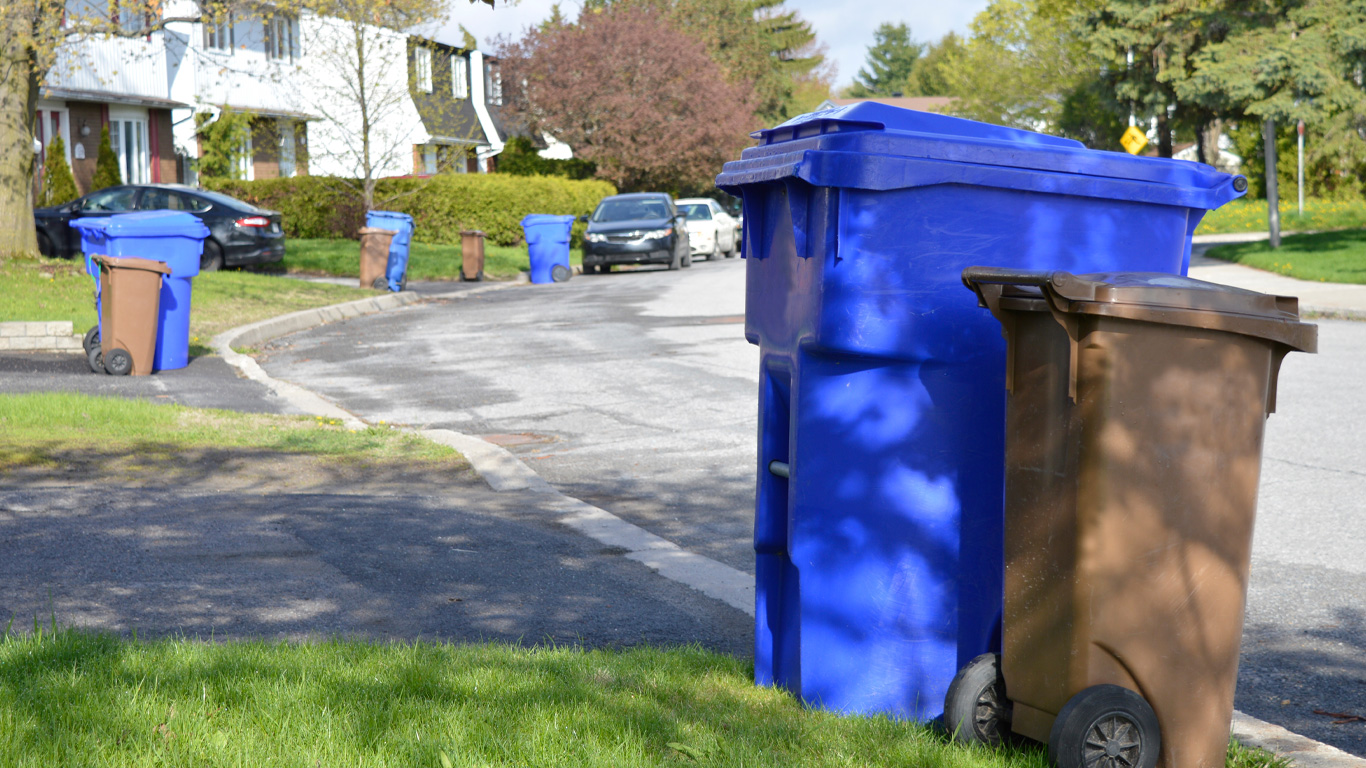
Every two years, we collect data on the amount of waste for disposal in Canada, by both residential and non-residential sources.
Residential sources include non-hazardous waste picked up by the municipality or self-hauled to disposal sites. Non-residential sources include waste from institutional facilities and commercial operations and waste generated by construction, demolition and manufacturing.
This past spring, we hauled out the garbage numbers for 2020, and, like the waste itself, it’s a mixed bag.
The nearly 10.9 million tonnes of residential waste generated across Canada in 2020 was the highest amount on record since we started tracking in 2002 and was 13,880 tonnes higher than in 2018. There were over 15.2 million tonnes of waste from non-residential sources in 2020, up 360,820 tonnes from 2018.
Residential waste made up over two-fifths (42%) of the 26.1 million tonnes of overall waste in 2020, compared with over one-third (35%) in 2002.
Waste from residential sources increased by 2.4 million tonnes from 2002 to 2020, while waste from non-residential sources decreased by 389,004 tonnes over the same period.
The only nationwide, two-year drop on record for residential sources was a 387,817-tonne decrease from 2006 to 2008. Waste from non-residential sources dropped steadily from a record of 16.6 million tonnes in 2006 to 14.7 million tonnes in 2016.
Quebec contributes most to the increase in residential waste
Five provinces—Alberta, Manitoba, Ontario, New Brunswick, and Prince Edward Island—all produced less residential waste for disposal in 2020 than in 2018, while the remaining provinces and the territories all produced more.
Ontario’s 3.8 million tonnes of residential waste in 2020 was the most among provinces, but this amount was a 166,454-tonne decline from 2018. It was also 375,803 tonnes more than in 2002, a roughly 11% increase.
Conversely, Quebec produced 3.4 million tonnes of residential waste in 2020, over four-fifths (82.3%) higher than the 1.9 million tonnes it produced in 2002. This was the highest increase among all provinces and accounted for more than half of the 2.4 million-tonne nationwide increase over the same period.
Residential waste in Newfoundland and Labrador declined by 55,071 tonnes, or just over one-quarter (-25.5%), from 2002 to 2020, while Manitoba’s was down by 87,126 tonnes, or one-fifth (-21.1%). Nova Scotia’s residential waste was down by 11,909 tonnes (-7.0%).
Non-residential waste: Quebec flips the script
Though Quebec generated the highest increase in residential waste from 2002 to 2020, its waste from non-residential sources declined 1.6 million tonnes, or two-fifths (-41.1%), over the same period to 2.3 million tonnes.
In the neighboring province of Ontario, the 6.5 million tonnes of non-residential waste was 279,125 tonnes, or 4.5%, higher in 2020 than in 2002. It was also a record two-year increase of 381,402 tonnes from 2018, following steady increases since 2014.
From 2018 to 2020, Newfoundland and Labrador (-11,017 tonnes, or -5.1%), New Brunswick (-1,992 tonnes, or -0.7%), Saskatchewan (-37,763 tonnes, or -7.8%), and Manitoba (-20,563 tonnes, or -3.3%) all saw a decline in non-residential waste generated. The other provinces and the territories saw slight increases.
Avoiding the trash bin
From 2018 to 2020 nationwide, there was a silver lining of sorts in all those garbage bags: a 351 798-tonne increase to 9.9 million tonnes of materials diverted for recycling, from both residential and non-residential sources.
Paper fibres made up over one-third (35.4%), the highest proportion, of these materials in 2020, while organics made up close to one-third (31.8%). Waste from construction, renovation and demolition made up 7.6%, and ferrous metals made up 7.3%.
Organics had the largest increase from 2018 (+273,814 tonnes) among all categories, followed by ferrous metals (+97,501 tonnes).
Other categories, such as plastics and textiles, saw increases over the same period, while fewer tires were diverted from disposal.
Contact information
For more information, contact the Statistical Information Service (toll-free 1-800-263-1136; 514-283-8300; infostats@statcan.gc.ca) or Media Relations (statcan.mediahotline-ligneinfomedias.statcan@statcan.gc.ca).
